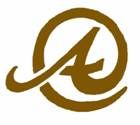 HARP stands for Home Affordable Refinance Program. It's the government's
refinance program for underwater U.S. homeowners.
HARP stands for Home Affordable Refinance Program. It's the government's
refinance program for underwater U.S. homeowners.As home values climb nationwide, fewer U.S. homeowners are requesting high LTV mortgages.
Through the first 5 months of 2013, the majority of HARP mortgage queries called for loan-to-values of 107% or lower.
HARP was first launched in 2009 as part of a broader economic stimulus program. Dubbed "The Obama Refi", it promised homeowners $3,000 in annual savings, on average; the result of refinancing loans to lower mortgage rates.
As part of the HARP program, lenders were instructed to refinance homes without respect to that home's value, so long as the loan size divided by the home's valuation remained at 125% or less. Via the Home Affordable Refinance Program, private mortgage insurance (PMI) coverage on a home was to remain as-is; and, closing costs were to remain limited.
Even if you lost your 20% downpayment to the housing market, you could refinance via the Home Affordable Refinance Program without incurring PMI.
In its first 3 years, there were more than 1 million HARP mortgage closings as the program helped U.S. households, U.S. banks, and gave a boost to the broader U.S. economy. As a result of HARP's success, in late-2011. the government expanded the program to help reach even more U.S. homeowners. The new iteration of HARP was quickly assigned the nickname "HARP 2.0".
HARP 2.0 : Closings Soar With Unlimited LTV
HARP 2.0 was announced in late-2011 and made widely available by March 2012. The program removed the loan-to-value limitations of the original Home Affordable Refinance Program while simplifying the cross-lender refinancing.HARP 1 made it a challenge to refinance a loan from Bank of America to Wells Fargo, for example. With HARP 2, the hurdles were removed.
Not surprisingly, HARP 2 outperformed its predecessor.
Whereas HARP 1 closed one million loans in its first 3 years of existence, HARP 2 closed 1 million loans in just its first 12 months, a large percentage, of course, of which were the ultra-high LTV loans not possible via the original Obama Refi.
This was especially true in states such as Nevada and Florida where home values had dropped the most toward the end of last decade. In these hard-hit states, the Home Affordable Refinance Program loans dominated refinance activity, accounting for more than half of all closings statewide.
HARP 3.0 : Focus On Non-Fannie Mae / Non-Freddie Mac Mortgages?
In 2013, though, the need for ultra-high LTV loans has waned. Home values are rising in many U.S. cities as the housing market expands. There are far fewer requests for HARP 2 loans as compared to a similar period last year.This website has fielded more than 56,000 HARP mortgage queries since HARP 2 launched. The difference between last year's queries and this year's queries is stark. Through August 2013, LTV requests are overwhelmingly lower as compared to 2012.
And, LTVs for HARP loans fall, the program's reach may become limited -- especially because the Home Affordable Refinance Program does not allow for loans with loan-to-values below 80%.
For this reason, Congress may be moved to make changes to the Home Affordable Refinance Program in order to boost the number of HARP-eligible households.
To
receive personalized rates please email me at eneal@athccorp.com with your
available times to discuss your options.

No comments:
Post a Comment
Note: Only a member of this blog may post a comment.